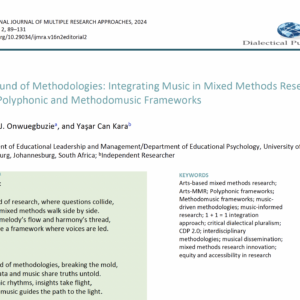16(1). 04. Comparing Ecology-Based Quantitized Themes Via the Shannon Diversity Index: Introducing the Shannon-Based Thematic Diversity Index
$30.00
Description
Author
Anthony J. Onwuegbuzie
University of Johannesburg, Johannesburg, South Africa and University of South Africa, Pretoria, South Africa
Abstract
Biodiversity indices are crucial in ecology for quantifying the diversity of species within ecosystems, providing insights into ecological health and guiding conservation efforts. Among these indices, the Shannon Diversity Index (SDI) particularly is popular due to its ability to account for both species’ richness and evenness, making it a versatile tool in various ecological contexts. Despite its widespread use in ecology, the application of the SDI in educational research has been limited, although it holds potential for offering valuable insights into the composition and variety of elements within educational settings. Therefore, the major purpose of this article is to demonstrate the applicability of the SDI in educational contexts by conceptualizing educational systems as ecosystems. A heuristic example is provided, showcasing how the SDI can be applied to analyze the diversity of challenges faced by university students across five institutions during the COVID-19 pandemic. This example illustrates how the SDI can be disaggregated to compare subgroups within the same dataset and applied across multiple ecosystems, allowing for comparative analyses of different educational environments. The discussion also addresses the minimum sample sizes required for reliable SDI calculations, ensuring accurate representation of diversity. This article demonstrates how the SDI can contextualize emergent themes subjected to descriptive-based quantitizing, highlighting the potential for integrating qualitative and quantitative research approaches more fully. The findings underscore the versatility and robustness of the SDI, advocating for its broader application in educational research to provide comprehensive insights and to inform targeted interventions, ultimately fostering more inclusive and effective educational practices.




